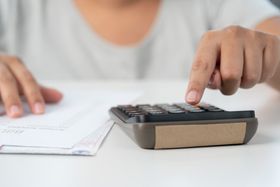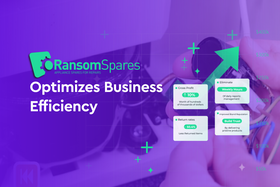Amazon FBA Profit Calculator Is Inaccurate—How Sellers Can Avoid Costly Mistakes
Updated April 28, 2023

While the Amazon FBA profit calculator is a handy tool, it shouldn't be taken as gospel. What do we mean by that? The information you get from the Amazon FBA profit calculator is not wrong—but it is only a guideline for your revenue analysis.
So, why use the calculator at all then? Because it still gives you a good idea of your revenue. But, you need to understand the inaccuracies so that you don't get caught, like many others, with small errors that end up costing you a small fortune. It also needs to be used in conjunction with other profit calculation methods.
The bottom line: to promote your Amazon products at a fair price, you need an accurate calculation of the FBA costs to maximize your e-commerce profit margin.
Understanding the Difference Between FBA and FBM
It's essential first to understand what FBA means and how it differs from FBM. Where FBA stands for Fulfilled by Amazon, FBM stands for Fulfilled by Merchant.
What's the difference between FBA and FBM? With FBA, the merchant pays Amazon to store and ship its inventory. With FBM, the merchant stores and ships the inventory in-house—that is, this function is not outsourced to Amazon.
Why the Amazon FBA Profit Calculator Isn't Always Accurate
The Amazon FBA calculator—otherwise known as the Amazon profitability calculator—isn't always 100% accurate. This is because many sellers have different products and unique requirements. It would be almost impossible to create an accurate calculator that would work perfectly for such a vast market of sellers.
Amazon confirms this in its disclaimer:
Avoiding 5 Expensive Amazon FBA Mistakes
These are five of the most common mistakes that sellers make and how they can be avoided:
1. Taking Your Eyes off Your Books and Accounting
Never lose track of your books. For your Amazon FBA business to work, you need to very carefully calculate your profits on your own, using the FBA calculator as a guide.
The one disadvantage of Amazon is that you have many competitors. Your calculations need to be so sharp that you offer the best value for money.
2. Not Understanding the Full Scope of Fees Charged
There are Amazon selling fees and FBA fees. Both sets of fees depend on different variances.
For example, if you buy too much stock and it stays in Amazon storage for longer than expected, fees could increase. You need to know and understand the full details of the fees charged.
3. Not Realizing That There Are Gaps in the Calculations
The calculator takes the basic costs into consideration. It doesn't take expenses like taxes, advertising and Amazon product promotion, and overheads into account.
You would need to include these and other hidden costs when tracking your expenses for a more accurate picture of your profits.
4. Not Including Returns in Your Calculations
Inevitably, there will be defective products and packaging. There will also always be customers that are not happy with your products. Sending products back will cost you, and this also needs to be accounted for.
5. Not Providing Amazon With Accurate Descriptions of Your Products
If you input inaccurate dimensions of your products, you could be calculating the total costs of storage and delivery incorrectly.
Let's look at an example. You sell a product for years, and it gets updated. Expectedly, the new packaging is slightly bigger than the previous packaging. You calculate costs according to the old specs, and Amazon calculates costs according to their measurements while in storage.
» Learn how to track and calculate your profit on Amazon FBA
Other Ways to Calculate Your Profit
Fortunately, you don't need to rely 100% on the Amazon version, as there are other calculators to use.
Five FBA calculators you could consider if you would like to research other options include:
- Seller App
- AMZScout
- Jungle Scout
- Viral Launch
- Helium 10
» Discover the best Amazon FBA calculator
Finding the Best Solution
There are various other ways to calculate your profit—each different way will work better for some e-commerce stores than others. You should take some time to try the different versions out simultaneously, and you will soon see which calculator is the most accurate for your business and your products.
There is no manual to give you all the right answers; otherwise, everyone would be highly successful Amazon merchants. The trick is to learn and keep learning, research and keep researching, and never stop growing. Good luck!








